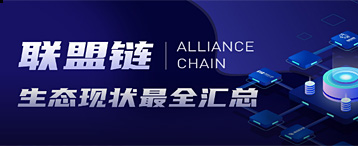-
Is Data Still the Core in Web3 Era?
 linkweb3
linkweb3 2023-02-09
2023-02-09 4662
4662 Tech
Tech
-
Summary:The biggest difference between web2 and web3 is "ownership" of data, data is still the core of Web3, thus, the storage, retrieval and calculation of data have to be taken into consideration.
We know the biggest difference between web2 and web3 is "ownership" of data. Data is the core of the Internet era, and since it is the core, we have to take into account the storage, retrieval and calculation of data.
The cost of blockchain is very high and the speed is too slow, so it cannot be used as a universal Web3 computing platform now.
Blockchain systems require more than 51% of nodes to agree on the validity of new data written to ensure security, so as nodes are added to the network and traffic increases, performance decreases further, which leads to very slow storage and writing of data on the chain. As time and usage grows, the length of the blockchain also increases, and storing data on the chain would result in an unsuitable database infrastructure for the vast majority of databases available on the market today.
Therefore, storing and writing data on the chain is very costly and slow compared to Web 2.0. Storing data on the chain will lead to many problems, for example, we are used to the web 2 era, the extremely fast experience of cell phones and computers when accessing the Internet, while blockchain in order to ensure consistent reading of data across node networks, their consensus mechanisms are slow and peer-to-peer consensus is slow; the amount of blockchain data stored on the chain is very huge and will only get bigger with use, few databases can reach this Many problems lead to the fact that on-chain storage is not possible as the mainstream storage method of web3.
There are many misconceptions about blockchain, thinking that it is very powerful and can do many things. In fact, blockchain is not equal to cryptocurrency nor web3. Cryptocurrency, Defi, NFT and Web3 are just applications built by blockchain and other basic technologies, and blockchain is just one of the technical modules. Blockchain alone is just a ledger to record what happened at what time, it doesn’t have other functions.
Blockchain is certainly not for storing, retrieving and computing data either. Many people hold the idea that AR always stores data on the chain, but we have to know that AR only stores very small capacity of valuable data.
Web3 data, such as videos, websites, pictures, music, etc., can only be stored off-chain, and a hard drive is needed.
Off-chain processing allows programmers to utilize both database technology and blockchain technology. The application reads data from the off-chain database and writes the data back to the chain. The state of the blockchain is synchronized to the database in real time. The accuracy and validity of the data can be ensured for applications to manipulate it quickly. When the application and the off-chain database have completed as much pre-processing as possible, the final result is submitted back to the chain.
By minimizing the application, off-chain data storage, retrieval and on-chain writes, the operational cost of most applications will be realigned to Web 2.0 levels. User application performance on the phone or computer will be restored to acceptable levels.
Because most of the data for an application's operations is stored in a fast, reliable off-chain database, both debugging time is saved and many production errors are avoided. As the blockchain grows, applications will meet uptime and response time expectations without having to redesign expensive systems or rewrite them months after they go into production.
A bit of a roundabout, simply put, the storage, retrieval, and computation of data is performed off-chain, and the results of the execution of these functions are verified on-chain to ensure they don't go wrong. For example, the data storage is in the miner's hard drive, the data retrieval is in the retrieval miner, the calculation is realized through the virtual machine, all these are carried out off-chain, so they are theoretically very powerful.
Conclusion
The focus on real-time data goes beyond blockchain, and technologies like blockchain help real-time data become part of the data architecture and business model. In the coming Web3 era, real-time data will remain a core.
Disclaimer:As an open information publishing platform, shilian only represents the author's personal views and has nothing to do with shilian. If the article, picture, audio or video contains infringement, violation or other inappropriate remarks, please provide relevant materials and send it to: 2785592653@qq.com.
Hint:The information provided on this site does not represent any investment suggestion. Investment is risky, and you must be cautious when entering the market.
ShilianFan group:Provide the latest hot news, airdrop candy, red envelopes and other benefits, WeChat: rtt4322.
















